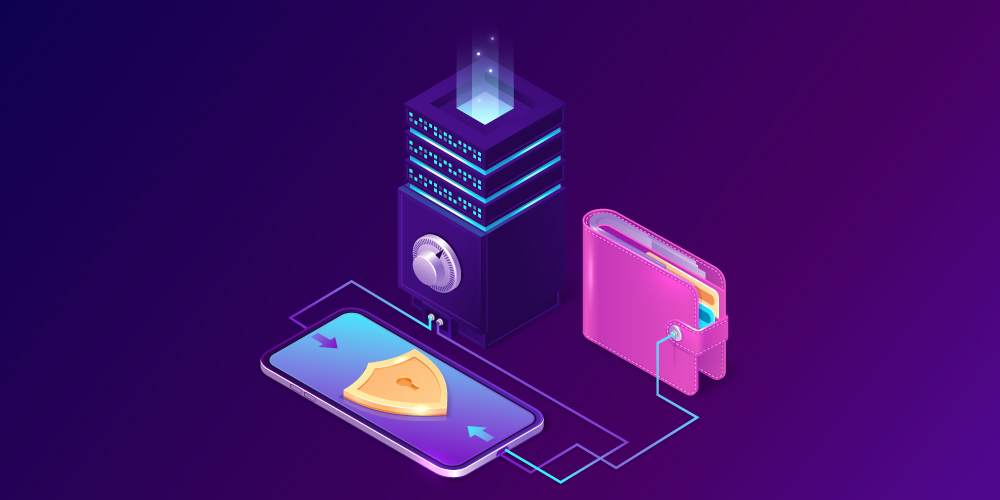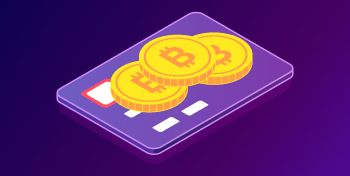Neo is a universal, community-driven, open-source blockchain development platform. Moreover, the Neo crypto ecosystem is filled to the brim with various supporting projects.
What is Neo Blockchain?
Neo is one of the industry’s oldest open source blockchain projects based on smart contracts, offering seamless development of decentralized applications, founded by Da Hongfei and Eric Zhang. After rebranding from Antshares to Neo in 2017, the project has been gaining momentum, seeing continuous growth in its adoption.
Neo’s mission is to create a “smart economy” using its innovative and powerful proprietary infrastructure, including embedded oracles, decentralized cloud storage, and domain name services.
Neo was a pioneer in the early blockchain industry. It was not only the first public blockchain with support for smart contracts that was founded in China, but also the first chain that used a two-token model, and the first to implement a consensus mechanism in the style of Byzantine fault tolerance (BFT). In addition, Neo is still the first and only token-selling crypto project to return all the funds originally raised to its participants after raising enough money to be self-sufficient.
The overall goal is to become a decentralized blockchain network for the “smart economy”. However, the team behind Neo recognizes that in order to achieve this goal, elements of centralization must be present at the initial stage. Four major groups around the world are working together to achieve the Neo mission. These are: Neo Global Development, Neo Foundation, core developers, and sponsored community groups.
NEO Token
To separate management from utility, Neo uses a two-token model. The primary native NEO token performs two main functions. NEO token holders have the right to participate in the management and vote for proposals to make changes to the Neo ecosystem. This is done through the Neo Committee, a community of nodes and members who have the rights to manage the performance parameters of the blockchain.
Initially, 100 million NEO tokens were generated in Genesis. The Neo Foundation has reserved about 50% of them to encourage the continuous development of the entire ecosystem. Moreover, NEO tokens are among the rarest native blockchain tokens with smart contract support due to the lack of partial divisibility. This means that tokens cannot be split into less than whole units. The minimum amount that NEO token holders can withdraw from the wallet is 1 NEO.
In addition, NEO token holders can receive passive income from the distribution of the Neo service token, GAS. In addition, this can be achieved without staking, simply by being a NEO token holder.
NEO GAS
The Neo Gas Utility (GAS) is required to pay network fees on the Neo blockchain, as well as to deploy smart contracts and make purchases in decentralized applications (dApps) built on the Neo blockchain. In addition, the more users vote on the Neo Committee, the more rewards in the form of GAS tokens they receive!
For each block mined in the Neo blockchain, five new GAS tokens are generated. Of these tokens, 10% is distributed among the Neo Board, 10% is distributed among NEO token holders, and the remaining 80% is shared among successful Neo Committee voters. Unlike NEO tokens, GAS tokens are divisible, with the smallest unit being 0.00000001.
GAS tokens received as a commission of the system are burned. Whereas, the GAS tokens received from network fees are distributed among the consensus nodes in the network. This is done in order to encourage good online behavior from an economic point of view.
GAS tokens are directly distributed among NEO token holders, with most wallets having a “claim reward”feature. However, crypto exchanges are not required to distribute GAS tokens. Some exchanges will distribute tokens to NEO token holders on their platform, while others will not. If you want to participate in Neo management, be sure to use a wallet that supports the Neo voting feature.
Neo Crypto Ecosystem Features
The Neo blockchain is one of the most popular smart contract-enabled blockchains in the industry, and boasts some impressive features:
- Completing a single block
Thanks to the dBFT (Delegated Byzantine Fault Tolerance) consensus mechanism, the Neo blockchain guarantees the finality of a single block. This means that transactions on Neo can be verified much faster than on many other blockchains, which require multiple block confirmations to complete the transaction.
This is achieved by having only two-thirds of the network nodes have to agree on a transaction before it is completed, unlike Bitcoin’s consensus mechanism, such as Proof-of-Work, which requires 100% node consensus before transactions are completed. The dBFT consensus mechanism “immediately eliminates the possibility of canceling the transaction”. In addition, this feature also means that the Neo blockchain will never be subject to a fork.
NEO Oracles
Oracles provide real data to smart contracts by transmitting valid and reliable specific pieces of information to execute a transaction. For example, when creating a bet on a sports game based on the blockchain, the oracle will confirm the score of the game from several sports sites, transmit this information to a smart contract, which can then automatically transfer the winnings to the appropriate party.
With the launch of the Neo blockchain N3 update (mentioned below) Neo introduces the built-in Oracle service. Developers who create decentralized applications (dApps) on the Neo blockchain can invoke their own oracle contract. This will create the ability to initiate a data request with the ability to include the appropriate URL link and filters.
Smart contracts
Neo smart contracts can be written in more than five different programming languages, including: Python, C #, Java, and Go. Neo believes in “bringing developers to the blockchain”, not in enforcement. After developers have written their smart contracts, they are compiled into the standard NEF (Neo Execution Format) format. At this stage, contracts can be executed on a lightweight Neo virtual machine, NeoVM. With the new Neo blockchain N3 network, developers can expect improved NeoVM performance.
NEO FS
NeoFS is a distributed data warehouse used for data in the NEO crypto network. Designed to provide complete security and privacy, NeoFS acts “as an indispensable replacement for expensive centralized data storage.” All data is secured with cryptographic encryption and gives developers full control over where and how their data is stored.
Like Filecoin and Siacoin, NeoFS operates as a free market, allowing anyone to become a member of a storage node. Storage nodes are provided to developers who can specify their choice of storage, from specific geographic locations to specific types of storage disks.
NeoFS is deeply integrated with the Neo blockchain, allowing developers of a public blockchain to access data stored in a decentralized cloud. Working in tandem with Neo Oracles, developers can use NeoF at the code level to access and manage ” data from NeoVM without the cost of storing data in the chain.”
Compatibility
With Neo, developers can create decentralized applications on the Neo blockchain that are compatible with some of the largest blockchains. These include the Bitcoin, Ethereum, Binance Smart Chain, Elrond, Huobi Eco Chain, Ontology, and Cosmos networks, as well as a number of others. Interaction with Neo and other blockchain networks became possible thanks to the Poly Network.
NeoiD
One of the most integral parts of the Neo crypto ecosystem is the ability to create a digital identity. Digital identity is one of the hottest trends in the blockchain industry, as it has solved many problems related to the identification and validity of identity documents. NeoID gives users the ability to create their own decentralized identity, permanently stored in the Neo blockchain.
“Decentralized Identity” may vary slightly in terms of definitions and protocol types, depending on the project. The self-contained, decentralized identity solutions offered by NeoID can be integrated into the Neo ecosystem. This means that when using their personal digital NeoID, users control the privacy of their data, and their identity is protected using cryptography.
Neo Name Service
Similar to the Ethereum name service, Neo offers decentralized domain names for web applications built on the Neo blockchain. The available domain names end in ” neo ” and can be used instead of a regular wallet address to make sending cryptocurrency as easy as sending an email. Instead of a long string of numbers and letters, users can send funds, for example, to “myname. neo”.
Neo Tracker Blockchain Explorer
Neo Tracker works in the same way as other block explorers, such as Etherscan. With Neo tracker, users can search for addresses, track transactions, explore blocks in the Neo block chain, and much more.
Neo Wallet
Neo’s own crypto wallet is used to transfer NEO or GAS when making transactions or interacting with smart contracts via the Neo blockchain. This easy-to-use web wallet makes it easy to navigate through various decentralized applications in the Neo crypto ecosystem.
Neo Blockchain N3 Update

In April 2021, Neo released Preview2, an update to the Neo blockchain N3 called Neo3. This preview introduced several new updates to the Neo crypto system, including a more powerful and flexible smart contract system. Additionally, Preview2 introduces updated elements to Neo Core and NeoVM.
The official launch date for Neo3 has not yet been confirmed. However, with the update, there will be an increase in the decentralization of the Neo blockchain. This will be achieved by giving NEO token holders the opportunity to vote on further critical blockchain parameters.
The Neo blockchain ecosystem aims to fulfill Neo’s mission of a new “smart economy”. This includes applications for exchanging and managing digital assets, decentralized identification, and smart contracts that can be written in multiple languages.
Moreover, the Neo Oracle service is organically intertwined with the development of smart contracts on the Neo blockchain. This is in addition to the seamless ability to interact with some of the largest blockchains in the industry. Neo has developed an ecosystem that benefits all involved parties and users. NEO token holders can vote for offers and upgrades, and earn passive income by receiving GAS tokens from DeFi without the need for staking. In addition, with the development of the Neo blockchain N3 update, Neo3, we can expect an increase in acceptance and huge attention to the project.


